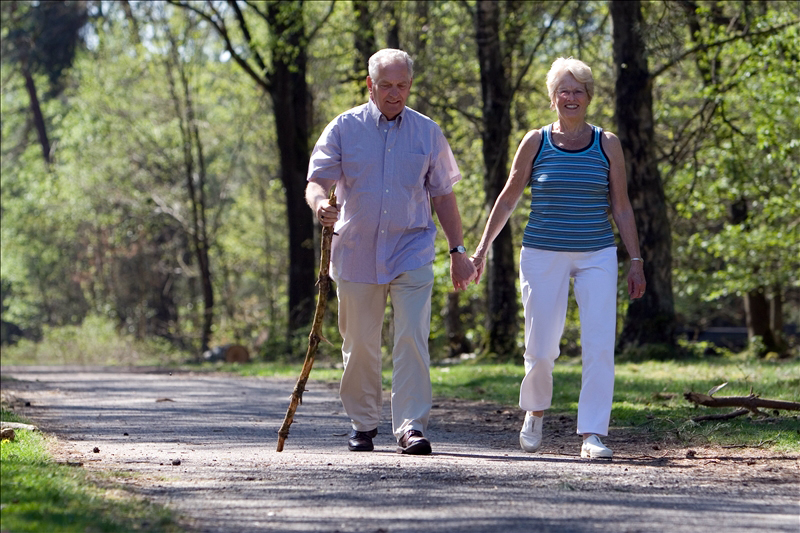We are all capable of navigating a successful aging process if we are intentional with our behaviors. Although successful aging has a different meaning for each of us and outcomes will vary, commonalities exist in most scenarios. In order to age successfully, you will need to fully embrace what it will take to accomplish the goal of living safely, independently, and comfortably within your community.
Mobility is vital to independence. Independent mobility is different for everyone. It may be through ambulation or use of an assistive device such as a cane, walker or wheelchair. You need to maintain the ability to be independently mobile regardless of utilizing a mobility or assistive device. Aspects of maintaining mobility include adequate balance, strength, and endurance.
The following 3 simple, yet vital exercises will help you to maintain your functional mobility and independence:
Walking
Walking is a wonderful method of exercise. Out of all the possible movements humans can perform for mobility, we are best at walking! Since most of us started at a very early age, we are familiar with walking. It has different purposes and offers many benefits. We walk to get somewhere, to have fun, to relax, and to exercise. Compared to other activities, walking is easy on your body and can fit into your busy schedule. Walking daily can reduce stress, improve circulation and hormone regulation, maintain strength and bone density, reduce pain as well as benefit your overall well-being. It just makes you feel good! Walk daily!
Squatting
Squatting in some form or capacity is a normal part of daily life. The muscles needed to perform a squatting motion or a sit to stand motion are critical for all functional mobility related movements, including walking; getting up from a chair or a toilet; or picking up someone or something. This motion helps to maintain lower extremity strength and range of motion as well as maintaining bone density and proper hormone regulation. It can also help improve balance and even aid in digestion. A simple method to practice this exercise is to move from sitting to standing. As you improve, find a lower surface to practice from. Eventually, the goal would be to move into a full squat (as long you don’t have any medical barriers that would prevent that particular motion).
Standing on One Foot
Balance is an important part of mobility. It is usually overlooked and taken for granted until mobility is significantly affected. Like all exercise, balance exercise should be fun and convenient. Balance, just like muscle strength, is a use it or lose it proposition. A simple, yet effective method to maintain and/or improve balance is stand near your kitchen counter and practice standing on one leg. You should be able to stand for at least 30 seconds. To increase the difficulty, practice balancing with your eyes closed.
These three exercises are critical for maintaining mobility and function as we age. Walking and squatting are some of the first abilities we develop as children, and they need to be the last ones we lose as we age. Your ability to perform these exercises is fundamental to how you are able to function throughout your life.
Which of these three simple, yet vital exercises can you implement in order to maintain your functional mobility and independence? Please leave your comments below.
Looking for relevant senior related resources in your community? The Seniors Blue Book is full of relevant resources for seniors as well as helpful articles on successful aging and elder care.
If you have a question that you would like featured in an upcoming blog post, please comment below or submit your question to contact@thePhysicalTherapyAdvisor.com. Be sure to join our growing community on Facebook by liking The Physical Therapy Advisor!
(This article first appeared in the Seniors Blue Book, April through September 2016, pages 116 and 117.)

